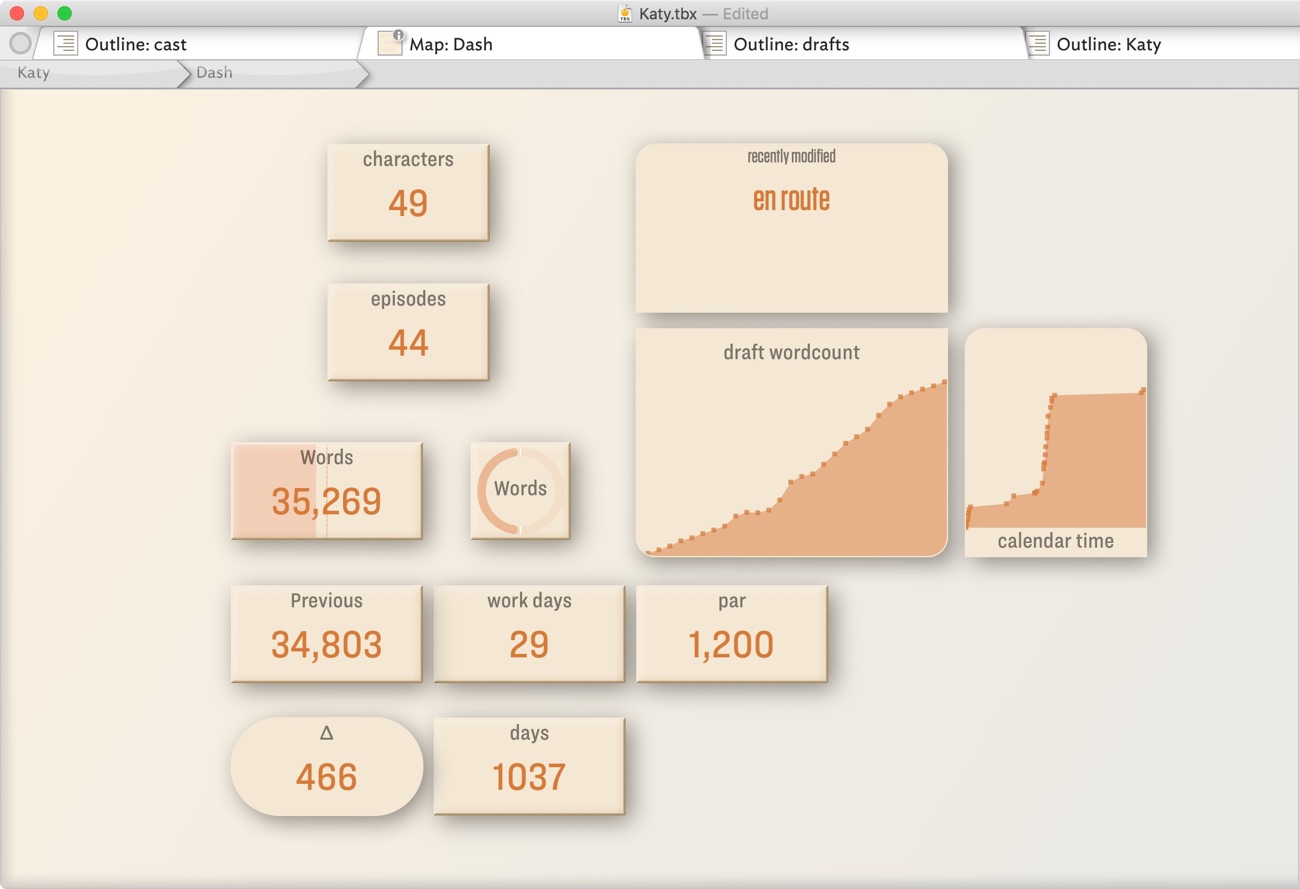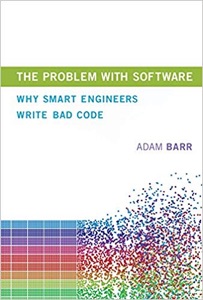Thoughts On Some Moral Questions Concerning Story In Immersive Hypertext Narrative
(Originally presented, in somewhat different form, at Authoring For Interactive Storytelling, Intl. Conf. On Interactive Digital Storytelling, Madeira, November 2017. This came up in a discussion today, and I think, on the whole, this has stood up well.)
1 Twenty Years On The Holodeck
Twenty years have elapsed since Janet Murray’s Hamlet On The Holodeck [1] argued that the future of new media lay in vividly immersive, encyclopedic and emotional interactive experiences rather than in the intertexual, allusive, lyrical and intellectual(ized) works that had epitomized new media through the preceding decade [2]. Murray’s vision of immersive dialogic experience been enormously influential throughout new media.
In these notes, I would like to call attention to a number of questions and sources of disquiet that arise in composing immersive works in which the reader intentionally and effectually acts to change the events that take place in the story. These issues are not new but they have not been widely discussed, and drawing them together in this context may have some value.
These are not hypothetical or invented questions. Most actually arose in the course of my writing a hypertext school story, Those Trojan Girls [6]. Others were familiar to me from editing and publishing hypertext fictions over several decades. Reflective practice is an important source of insight, and its judicious use can prove invaluable [7]. To avoid paying too much attention to a single obscure work, and also to avoid the imputation that its author is exception- ally moral or otherwise, I draw illustrations from a number of works, real or imagined.
2 The Shot And Danger Of Desire
We may begin, alongside Murray, with the vision of inserting the reader into the story of Hamlet. We are not passive witnesses of the scene, nor minor players—not Rosencrantz or some third murderer, incapable of changing what happens. We are a prince! (I have noted elsewhere that, considered as a dramatic practice, this approach is not always promising: let a sensible person like you or me into a tragedy and the tragedy is prone to fall apart at the slightest touch [8].)
What, on the holodeck, are we to do about Ophelia? She is an enigmatic character, one whom the 19th century found more fascinating than the 21st. Polonius speculates that Hamlet loves her; Laertes views a sexual relationship as a threat. If, as interactor, we have meaningful choice, might some combination of choices lead us to propose to marry Ophelia? To kiss her? To have sex with her?
All these choices are problematic. Can a simulated character marry? Specifically, can she consent? The presentation of meaningful choice within the fictive world leads us to the very threshold of the Turing Test, for the characters must necessarily be sufficiently convincing as to invite suspension of disbelief [9]. The choices, moreover, are ours and the performance is ours as well: it is one thing to witness theatrical events that you cannot affect and that harm no one; it is another thing entirely to perform yourself what might be a crime. In the playhouse, Ophelia drowns every night and twice on Saturday whether we purchase a ticket or not; on the holodeck, Ophelia drowns only if we fail to prevent it. And if tonight we want to see her drown, who have we become?
Holodeck Ophelia exists only for us [10]. If we propose to make love to her, is her consent not coerced? Ophelia will exist only as long as Hamlet remains interested in pursuing a romantic relationship or a sexual liaison. The imbalance of the power relationship is overwhelming, and indeed the holodeck must, if anything of dramatic importance is to be accomplished, make us forget that we are proposing to make love to a character whom we believe (or are led to believe) has free will but whose choices appear to be limited to either consenting to our advances or accepting (in one form or another) oblivion.
3 A Fault To Nature
Is Juliet of age in the jurisdiction through which your holodeck is passing? Is Romeo? In fair Verona, Romeo’s behavior entailed criminal neglect of Capulet’s rights. In Boston today, we might excuse the young lovers, but what if one of the lovers is twenty-five or fifty years old? [11] Even Train [12], a performance game about the Holocaust, must deceive its players into complicity by withholding information that its historical figures knew [13].
Some interactive fictions lure or compel the player to commit crimes in order to understand the criminal, just as some novels relate the point of view of unreliable or criminal characters. In other tales, the offense is incidental, or merely a precipitating incident that sets the story in motion. Romeo and Juliet is not about statutory rape, or even about romantic love: it concerns the difference between youth and age, prudence and passion. Yet, to get things started, I may need to initiate a sexual relationship that, if I am old but my character young, must disquiet me.
To witness the (performance of the) sexual relationship might also disquiet some, but that is something else entirely. Walk along the quais of Paris or the streets of San Francisco and you may encounter young people whose behavior you may not entirely approve. They have not asked your opinion. To know that others do things that you might not is to understand that the world is large and people various; to do those things yourself might be another matter entirely.
Men have died from time to time, and worms have eaten them, but it’s not our fault: on the holodeck, it is.
4 I Would Rather Hear My Dog Bark At A Crow
The promise of immersive new media lies in their vivid immediacy. That very vividness raises questions that, if familiar from other media, nevertheless bear fresh reflection. Postmodernism entailed a prolonged investigation into the relationships among the scene and its depiction, and between its depiction and our apprehension [14]. The literary foregrounds postmodern oscillation, and the visual arts find ways to emphasize the relation between the pigment and the sunlight that illuminates the pretty girl’s bath[15]. But we need not be distracted in this way; the technical term art criticism adopts for the unreflective depiction of beauty is pornography.
We may equally worry over the mindless depiction of horror and carnage. This is not the argument, so tediously advanced by right-wing politicians, that pictures of naked ladies or criminal acts tempt impressionable youths to lives of crime. Rather, the more effective the immersion, the more convincing the illusion, the less space we have for reflecting on the fictive situation or on our response to it. To inflict torment harms us, even when the victim is not fully human or precisely real.
5 Sleep Of Reason
The holodeck itself first appears in Star Trek at its start. In the pilot episode, “The Menagerie,” Talosian scientists create a virtual reality for a human captive, rescued from a crash, whose injuries might otherwise prove intolerable [16]. Scarcely examined was the question of whether we ought to face things as they are: Roddenberry assumes that human women instinctively long to be physically attractive, but “The Menagerie” deprives its protagonist of any real opportunity to come to grips with her body. She cannot be a stoic: the immersive illusion gives her no op- portunity to discover stoicism. The illusion preempts reason.
McLuhan’s hot media sit uneasily in the company of the abstract, the theoretical, and the introspective. The fifty years since the medium became the message have seen the New Wave, the golden age, the blockbuster, mumblecore, Bollywood and much else but we know little more than we did then about crafting a cinematic discussion of nucleophilic substitution or Gödel’s Completeness Theorem. When we want to discuss test-driven development or the terms of a mortgage, we write.
The novel and the epic frequently balance the impulse to describe experience and the impulse to weigh the thought that experience evokes. Between battles and lovemaking, Les Miserables gives itself ample space to discuss the rights of man and the morality of the desperate. The epic poet sings of arms but also of the man, not of the hero’s strength but of his anger. Immersion gives us greater access to experience—to the sounds of ancient combat, to the beauty of those sad, captive Trojan women—but thus far it has done little to help us think more clearly about the status of refugees, whether it is better for the children to seek to assimilate with the (newly) dominant culture, whether we ought to stop a teenager (Polyxena or Marius) who has chosen to die for an idea rather than to live a slave. A playwright might intensify a character’s (imagined) pain to underline to clarify the pathos of her plight to the audience, but is it right for us to inflict that pain for our own private purposes?
6 Stand Up And Say To All The World, “This was a man!”
Many contemporary interactive fictions allow the reader wide latitude to choose the race and gender of the hero-protagonist, either through an explicit character-selection dialogue or through an introductory episode that acts as a sorting hat. This flexibility seeks to promote identification while redressing historical biases in race, gender, and sexual orientation [29].
This approach implicitly argues that race (say) doesn’t matter, that we might casually don it like a suit of clothes. Alternatively, we might write the story so that our chosen race does matter in some specific way, but that outcome itself is bound to be partial (in both senses) and flat. Do consequences of choosing a race inhere in the choice or depend on the authenticity of the enactor’s performance? Do the effects of choosing to be Black, female, or Jewish in a fictive world inhere in the label, in observance, in cultural practice? The storyteller is required to present a comprehensive theory of identity, simply as a prelude to writing “a stranger comes to town.”
7 Speak To The Yet Unknowing World
The essence of hypertext fiction is multilinearity: as Oz’s Scarecrow reported, some go this way, others that way, and some prefer to go both ways. Multilinearity offers important opportunities [17] [18], but has also evoked plentiful anxiety lest coherence or authorial intention (if it exists) be compromised [19] [20] [21].
Hypertext’s threat to coherence has always been more a symptom of resentment of Critical Theory than a practical concern [22], but a related moral hazard has not been widely remarked: free and knowing navigation ought to be constrained by our duty. An important innovation in Seneca’s version of The Trojan Women—a play composed some five centuries after Euripides’—is the sacrifice of Polyxena, a young girl assigned by the victorious Greeks to be the bride of the dead Achilles and who is therefore to be sent to his shade in Hades. In my hypertextual school story Those Trojan Girls, Polly Xena is the head girl of a private boarding school, situated in a newly-occupied third-world country. Like Polyxena, Polly is not the hero of the tale but her trial and execution are a fulcrum around which much revolves and a crucial reminder that school, to kids, is deadly serious [23]. The matter requires care: we are describing the judicial murder of a child [24]. In the hypertext, the episode might be approached by different readers through differing paths. It might be dramatized in various ways or reported by various messengers. But attention must be paid; it is not the structural center of the story but, in decency, we cannot simply omit it.
8 Something Wicked
The Haggadah annually reminds us of the Wicked Child, which is to say the child who holds himself aloof from and superior to the story, the child who asks “what is this computational narrative of yours?” Gardner famously chides writers who treat their own characters inhumanely; is it not equally wanton for us to maltreat computational worlds and their denizens? If so, blame is due not only to the thoughtless interactor but also to the writer who led her into error. Michael Joyce’s afternoon, a story famously tempted the reader with Satan’s question:
“Do you want to hear about it?” [32]
We could not refuse an acquaintance who asked this, but we might be tempted to deny Peter — who is, after all, a program inside a plastic box. If we do, though, afternoon acknowledges the temptation and gently steers us toward righteousness.
Tabletop role-playing games address the problem of the wicked child through social sanctions: if you’re tasteless, you’re unlikely to be invited back [33]. New media remediates social storytelling to make the story yours, but requires a new mechanism to discourage a cynical or unthinking stance.
9 Discussion
I have briefly sketched a number of moral questions that arise in immersive hypertext fiction.
- Can automata consent?
- May we inflict crimes on automata?
- Automata, pornography, and sadism
- Sensory immersion preempting reason
- Choice rendered inconsequential in fictive world
- Failure of witness
- The Wicked Child
The moral dangers of fiction have concerned commentators since Plato, but our new qualms inhere not in fiction’s indulgence of untruth, nor in the sexual license of itinerant players, but in immersion itself, in fictive experience that are not only unreflective but that resist reflection.
This catalog of hazards is neither systematic nor complete. Our concerns here are quite different from the problem of generating sentimental stories [25] or stories about the characters’ sexual morality[30], or the (interesting) challenges of avoiding unwanted offense or unintended meaning when generating stochastic texts without a thorough knowledge of their underlying meanings [26]. The challenges discussed here do not involve antisocial acts like the Rape In Cyberspace[27] or Gamergate [28].
Remedies for the family of moral questions raised here lie predominantly in reflection and intertextuality. These various failings share a common source: either the creator or the interactor may fail to take the story with sufficient seriousness. Gazing upon beauty may be mere hedonism, but if that gaze leads to contemplation, we cannot fault it. “The puritan,” Eagleton reminds us, “mistakes pleasure for frivolity because he mistakes seriousness for solemnity.” Early literary hypertext may have been inclined to be solemn, and interactive games to be frivolous. We need to think again.
References
1. Murray J (1997) HAMLET ON THE HOLODECK: THE FUTURE OF NARRATIVE IN CYBERSPACE. The Free Press, New York
2. Landow G. P. (1997) HYPERTEXT 2.0: THE CONVERGENCE OF CONTEMPORARY CRITICAL THEORY AND TECHNOLOGY, 2nd edn. Johns Hopkins Press, Baltimore
3. Bernstein M (2009) On Hypertext Narrative. ACM Hypertext 2009
4. Lowe NJ (2000) THE CLASSICAL PLOT AND THE INVENTION OF WESTERN NARRATIVE. Cambridge University Press, Cambridge ; New York
5. Genette G (1983) NARRATIVE DISCOURSE: AN ESSAY IN METHOD. Cornell
University Press, Ithaca, NY
6. Bernstein M (2016) THOSE TROJAN GIRLS: A HYPERTEXT. Eastgate Systems,
Inc., Watertown, Ma
7. Millard D.E., Hargood C (2017) Tiree Tales: A Co-Operative Inquiry Into The Poetics
Of Location-Based Narrative PROCEEDINGS OF THE 28TH ACM CONFERENCE
ON HYPERTEXT AND SOCIAL MEDIA. HT ‘17 15–24
8. Bernstein M, Greco D (2002) Card Shark And Thespis: Exotic Tools For Hypertext
Narrative. In: Wardrip-Fruin N, Harrigan P (Eds) FIRST PERSON. Mit Press, Cam-
bridge
9. Short E GALATEA.
10. Stross C (2008) SATURN’S CHILDREN : A SPACE OPERA. Ace Books, New York
11. Nabokov VV (1955) LOLITA. Olympia Press, Paris
12. Costikyan G, Davidson D (2011) Tabletop : Analog Game Design. Etc. Press, Pittsburg
13. Goldhagen DJ (1996) HITLER’S WILLING EXECUTIONERS : ORDINARY
GERMANS AND THE HOLOCAUST. Knopf : Distributed By Random House, New
Y ork
14. Eagleton T (2003) AFTER THEORY. Basic Books, New York
15. Gaggi S (1997) FROM TEXT TO HYPERTEXT: DECENTERING THE SUBJECT IN
FICTION, FILM, THE VISUAL ARTS, AND ELECTRONIC MEDIA. The University
Of Pennsylvania Press, Philadelphia
16. Roddenberry G (1968) The Menagerie. STAR TREK I 11-12
17. Joyce M (1997) Nonce Upon Some Times: Rereading Hypertext Fiction. MODERN
FICTION STUDIES 43:579–597
18. Bernstein M and Greco D, eds. (2009) READING HYPERTEXT. Eastgate Systems,
Inc., Watertown Ma
19. Bernstein M (2010) Criticism. PROCEEDINGS OF THE 21ST ACM CONFERENCE
ON HYPERTEXT AND HYPERMEDIA 235–244
20. Parks T (2002) Tales Told By The Computer. NEW YORK REVIEW OF BOOKS
44:49–51
21. Birkerts S (1994) THE GUTENBERG ELEGIES. Faber And Faber, Boston
22. Bernstein M (2016) GETTING STARTED WITH HYPERTEXT NARRATIVE. East-
gate Systems, Inc, Watertown, Ma
23. Spark M (1961) THE PRIME OF MISS JEAN BRODIE. Macmillan, London
24. Collins S (2008) THE HUNGER GAMES. Scholastic Press, New York
25. Sarlej M, Ryan M (2013) Generating Stories With Morals. Joint International Confer-
ence On Interactive Digital Storytelling 217–222
26. Cook M (2017) Ethical Procedural Generation. In: Short Tx, Adams T (Eds) Procedural
Generation In Game Design. Crc Press, Boca Raton, Fl
27. Dibbell J (1993) A Rape In Cyberspace. THE VILLAGE VOICE
28. Hern A Wikipedia Votes To Ban Some Editors From Gender-Related Articles. THE
GUARDIAN January 23, 2015
29. Ashwell SK (2015) Standard Patterns in Choice-Based Games. http://bit.ly/1JzJxpd
30. Murray, JH (2015) A Tale Of Two Boyfriends: A Literary Abstraction Strategy For
Creating Meaningful Character Variation. INTERACTIVE DIGITAL NARRATIVE,
Harmut Koenitz et al, eds, Routledge, New York 121-135
31. Gardner J (1983) THE ART OF FICTION: NOTES ON CRAFT FOR YOUNG
WRITERS. Vintage Books, New York
32. Joyce M (1990) afternoon, a story. Eastgate, Watertown MA
33. Bernstein M. A FESTIVAL OF NARRATIVE AUTOMATA, Eastgate, Watertown MA






